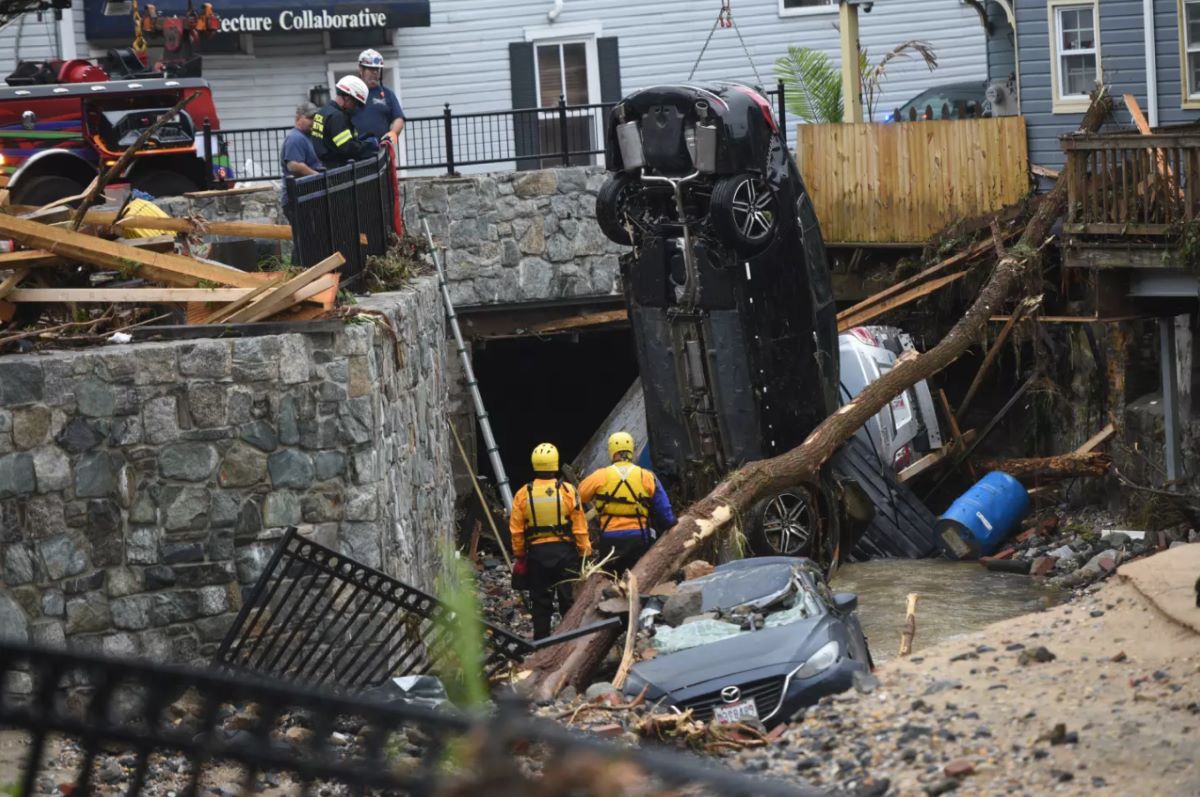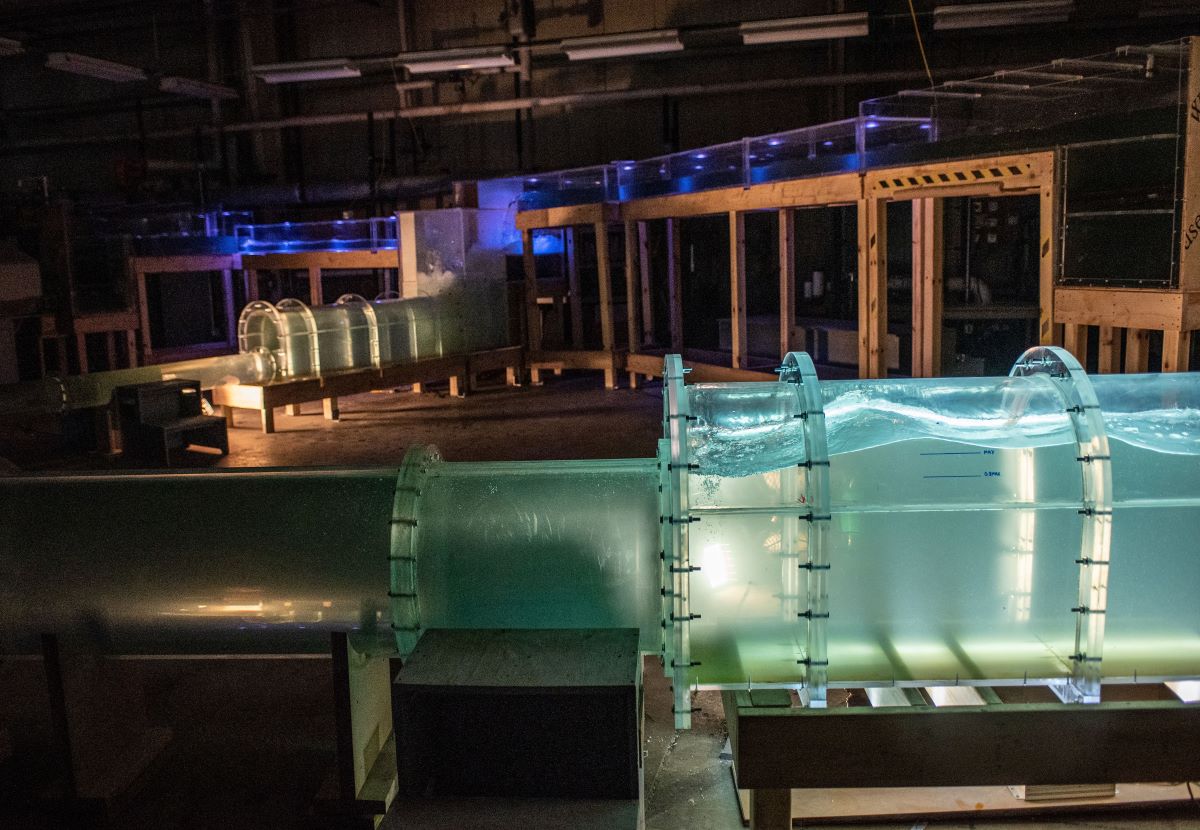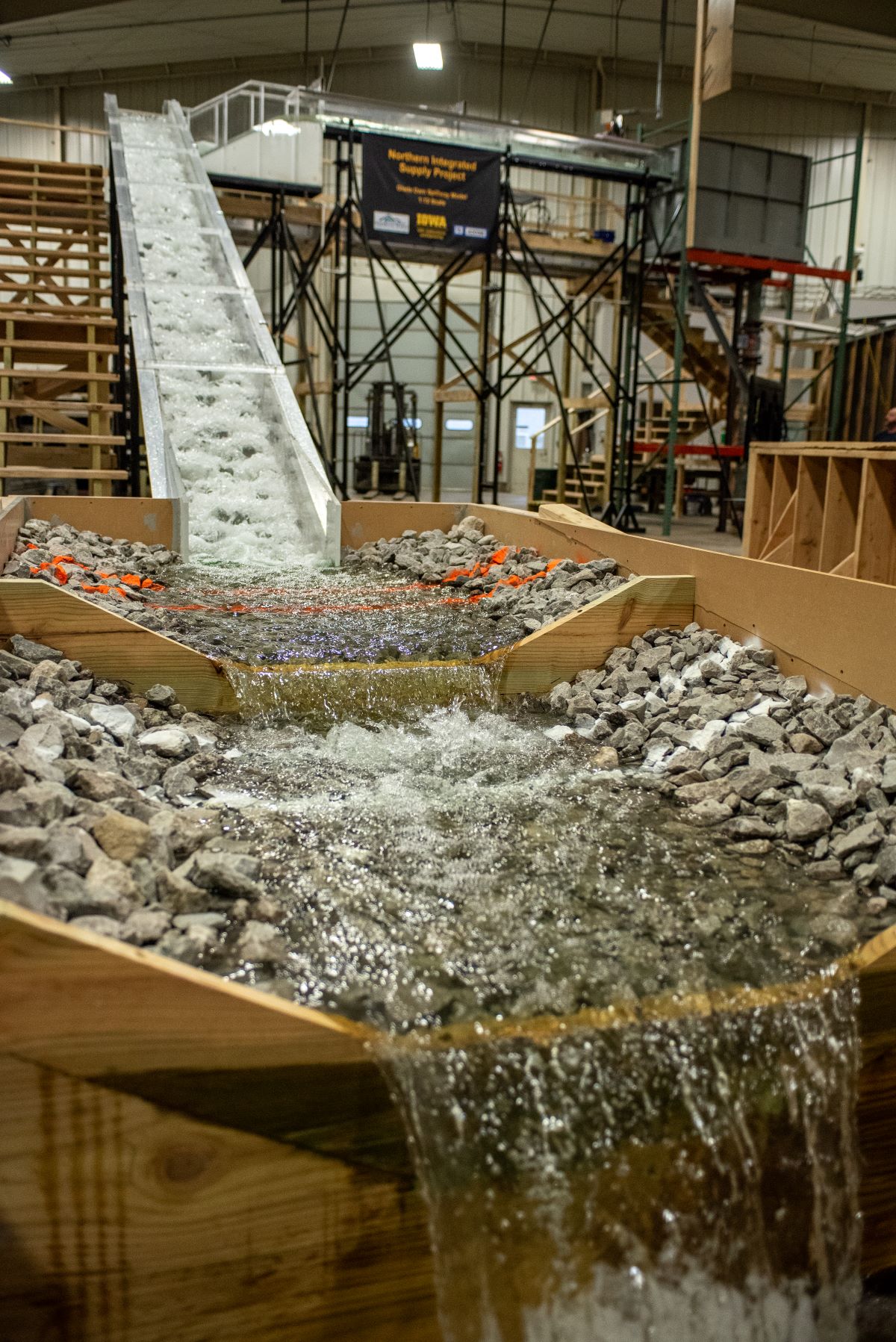Physical hydraulic modeling remains a core strength of our team, perfected through decades of experience developing innovative designs to address real-world challenges.


Flood mitigation for Ellicott City, Maryland
In July 2016, torrential rains of nearly six inches in two hours dropped over Howard County, Maryland, causing catastrophic flooding in the historic downtown Ellicott City. Nearly everyone was impacted, including homeowners, business and property owners, and tourists. The epic storm caused an estimated $10.8 million in public infrastructure damage and $67.2 million in economic loss. Two people were killed.
Located at the confluence of four branches of the Patapsco River, the community is highly susceptible to flooding. Just two years later in 2018, the city experienced an even worse flood after receiving eight inches of rain in 24 hours, again causing the loss of life for two victims and damaging about 250 homes and businesses.
Howard County government officials sought out IIHR’s physical modeling expertise for a study to support the design of flood mitigation options for Ellicott City. IIHR fabricated and built two interconnected 1:12 scale physical hydraulic models to evaluate and improve the designs of two unique drop structures that would divert water through a deep underground tunnel and bypass the most vulnerable part of the city. IIHR modeling results identified design modifications that will reduce construction costs for the flood mitigation project by an estimated $4-5 million.
Water sustainability for Colorado
The Northern Colorado Water Conservancy District (Northern Water) is responsible for serving 1 million water users, with a half million more expected by 2050. To ensure a safe and reliable water supply, Northern Water developed the Northern Integrated Supply Project, which proposes creating two new reservoirs. The primary Glade Dam and Reservoir will receive water from the nearby Poudre River via diversion and a canal to a receiving basin at the spillway base. From the basin, water will be pumped to fill the reservoir. IIHR was contracted by BV AECOM to perform a 1:12 scale physical model of the baffled chute spillway to evaluate, optimize, and refine the layout and to avoid overtopping or significant splashing that could cause erosion. The model informed the design of unique features, including a sharp bend partway down the spillway chute, and the evaluation of what will be the longest baffled chute spillway in the world once completed. The Glade Reservoir is expected to be operational by 2028.
